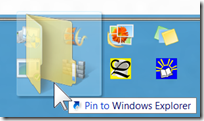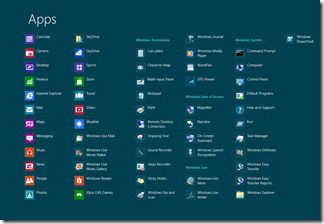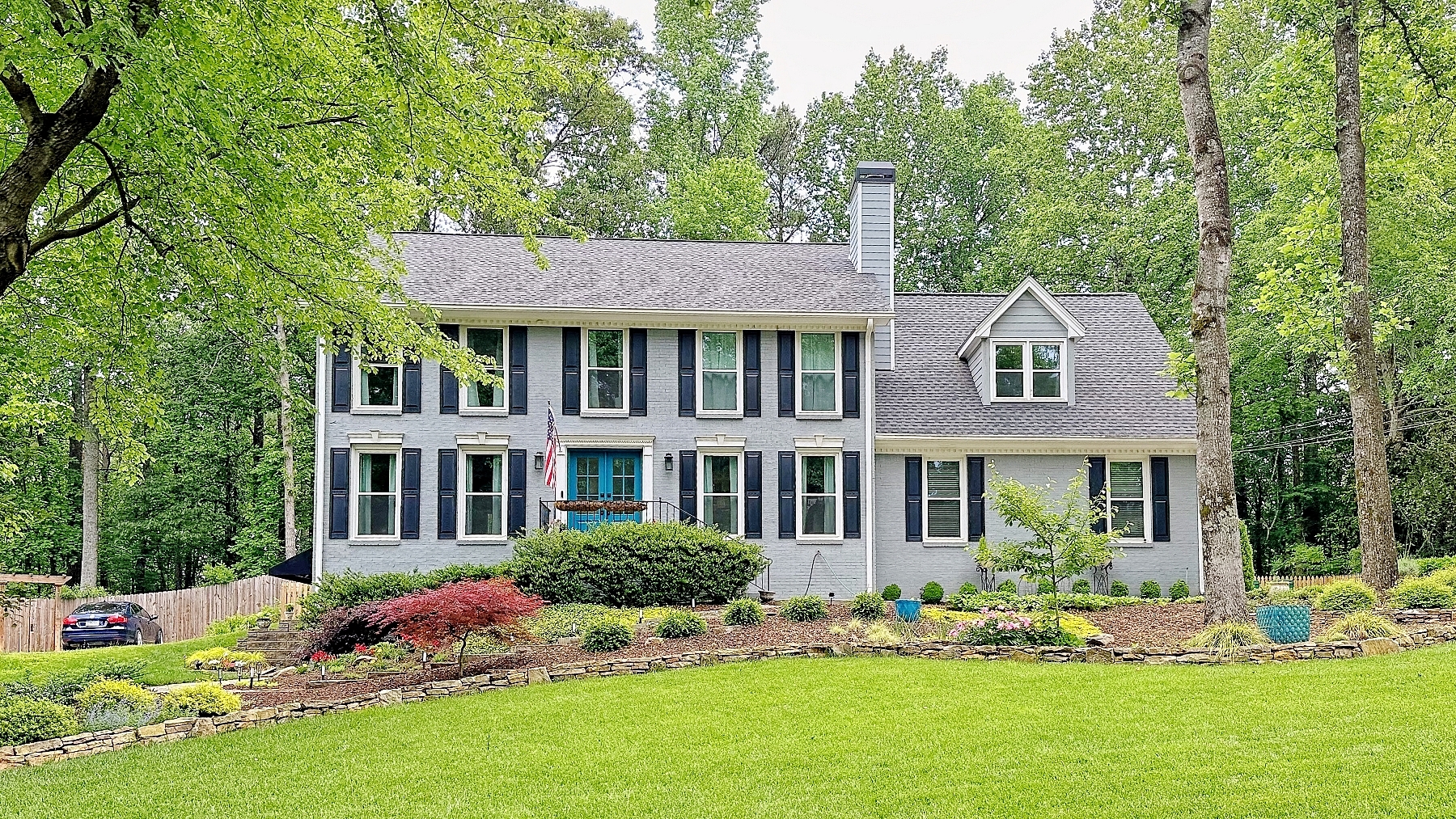In Windows 8 there is no Start button and no start menu on the desktop. The Start Screen takes the place of the start menu. In the words of one Microsoft staffer: “The Start screen is the dashboard to everything important to me”. That is the charm and the beauty of the Start screen but also its burden and weakness. 
When you are working and need to make a quick calculation you want to get to the calculator without the distraction and interference of being shown the current temperature, the pretty flower photos, the doings of the stock market, your friends portraits, happenings in Washington, the email that just came in …. You just want the start menu showing the programs.
I offer the taskbar as an adequate substitute for the time being. Look at what I mean before I go into the details:
On the taskbar there can be shortcuts icons to all the programs you commonly use, also links to websites, folders, even files – you will see. On the taskbar, jump lists make getting to a particular item quick and easy. As you can see in the illustration, the taskbar can be made larger to accommodate a large number of icons. Of course, it can also be set to “auto-hide” so it gets out of the way and you can make full use of the desktop.
First step – pinning programs, “apps”, to the taskbar
 The replacement for “All programs” is the “All apps” screen. From the desktop, press the logo key,
The replacement for “All programs” is the “All apps” screen. From the desktop, press the logo key,![]() , to get to the Start screen, then right-click to bring up the apps bar. On the right end click the “All apps” icon. Yep, it is that awkward.
, to get to the Start screen, then right-click to bring up the apps bar. On the right end click the “All apps” icon. Yep, it is that awkward.
The Apps screen shows the installed programs, those that come with Windows 8 and any that you have installed. You may have to scroll across to see them all.
Right-click a  program, sorry, “app”, the field will be highlighted and show a checkmark
program, sorry, “app”, the field will be highlighted and show a checkmark  and the bottom bar will show options. It is “Pin to taskbar” that is of interest to us here. Click that, and over on the desktop the taskbar will now sport the icon for that program. Do that to the programs that you will commonly use.
and the bottom bar will show options. It is “Pin to taskbar” that is of interest to us here. Click that, and over on the desktop the taskbar will now sport the icon for that program. Do that to the programs that you will commonly use.
Some apps cannot be pinned to the taskbar, this is true of the Metro style apps. You can pin apps to the Start screen as well.
Arranging the taskbar
 To enlarge the height of the taskbar just drag the top edge as if it were a window. This will not work if the taskbar is locked. Right-click on an empty spot on the taskbar, in the menu click Properties. The Properties dialog lets you make a number of settings. Uncheck Lock the taskbar in order to be able to resize it.
To enlarge the height of the taskbar just drag the top edge as if it were a window. This will not work if the taskbar is locked. Right-click on an empty spot on the taskbar, in the menu click Properties. The Properties dialog lets you make a number of settings. Uncheck Lock the taskbar in order to be able to resize it.
You can drag the icons on the taskbar to another position, they will click into place.
Pinning folders and files
 You can just drag a folder or a file to the taskbar. There will not, however, be a separate icon for these.
You can just drag a folder or a file to the taskbar. There will not, however, be a separate icon for these.
When you drag a folder, see the illustration, it will say “Pin to Windows Explorer”. What really happens is that it is added to the Windows Explorer jump list,  but it is “pinned” to that list at, or near, the top. Take a look at the illustration.
but it is “pinned” to that list at, or near, the top. Take a look at the illustration.
Right-click the Windows Explorer icon to see the jump list. Click on an item in the jump list to open that item.
A similar situation occurs for files. Files are associated with a program that opens them, For example a text document would be opened with NotePad. When you drag the document to an empty spot on the taskbar it will say “Pin to WordPad”. It is then added to the WordPad jump list.
Of course, files can be manipulated or operated on by various programs. If you drag a text file to some other icon it will allow you to pin it to the jump list for that icon most of the time. So be careful with that.
Navigating and opening programs and files
To open a program click its icon on the taskbar. To open a pinned or recent file, right-click the icon and click the item in the jump list. To bring programs to the front click on the, now highlighted, icon on the taskbar. If there are multiple instances of a program open, or tabs open, click the miniature window when you move the pointer over an icon. The picture here shows several tabs of Internet Explorer.
Repeated clicking an icon will minimize or restore a window.
Search
Searching for items gets a little bit tricky.  Windows Explorer has a search window where you can type in your search text. There is a larger box where the search location can be selected. Note that the search is conducted in the selected area. Opening Windows Explorer and typing “calcu” to bring up the calculator does not work in the default libraries area – it isn’t there. You can search the entire computer, it will find it, but the process is slow.
Windows Explorer has a search window where you can type in your search text. There is a larger box where the search location can be selected. Note that the search is conducted in the selected area. Opening Windows Explorer and typing “calcu” to bring up the calculator does not work in the default libraries area – it isn’t there. You can search the entire computer, it will find it, but the process is slow.
One little bug: When you have installed the SkyDrive app, it is shown under Favorites (default installation). However Windows Explorer does not search the SkyDrive folder when set to search Favorites. It works fine if you specifically search the SkyDrive folder. The Metro search, however, looks in all places, including the SkyDrive folder.
When you need to search for something, you may just decide to go to Metro search.  Press the logo key and Q (logo+Q). This brings up the Apps screen with the search bar. Just start typing, no need to position the cursor. The apps will be instantly listed on the left.
Press the logo key and Q (logo+Q). This brings up the Apps screen with the search bar. Just start typing, no need to position the cursor. The apps will be instantly listed on the left.
If you are looking for a file, click “File” under the search text window. This “search” Metro app really is well done, it functions just at you would expect, it looks for matching text inside documents, picture tags, and other nooks and crannies. Then click the file or program and get back to the desktop.
.:.
© 2012 Ludwig Keck











Yes, let’s go back to using the trusty taskbar, that is instantly accessible and customizable in all previous versions of Windows thru Windows 7…until Windows 8. Change is good if reasonable. The expansion of the START menu to a START Wall, and forcing a user to perform extra steps to get to the main Windows desktop is a very backward and unnecessary change. I use my computer for production, for both business and home use. The traditional Windows desktop is practical, provides instant access to system information, battery power time, what programs or apps I currently have open, and this is always available via the TASKBAR.
I foresee a major service pack coming soon to rectify this and other problems inherent with the new Windows 8 design, which now has a user moving back and forth between two different environments just to get information and work done that was once easily and readily accessible…in one environment.
Sometimes, less is more. The apps tile START window is fine, but incorporate a taskbar so that we don’t have to click on the taskmanager or other apps and system utilities just to see where we are in the here and now. That is my request.
This is a nice “START” for a new Windows platform, but it has to do more than force a user to move back and forth twixt two environments–one old, one new. Give us a single platform that works to do it all. Am I asking too much. Stay tuned.
Amen.
MH
I think the taskbar is essential to directly access the file you are focused on for some time, and I think more than a billion users think the same way. PF.
Is it possible to put a TASKBAR onto a Windows 8 Laptop !!!!!
It’s right there on the desktop. Just click the desktop tile. If you don’t see it, maybe auto-hide it turned on, move the pointer to the bottom (in the middle somewhere). If you still can’t see it, please send a message to Ask Ludwig.
Thank you for the kind remarks and thank you very much for the additional information.
if you mistakenly uninstall window8 photos application on the taskbar, how can you retrieve it back to your system
The Photos App does not offer a way to add it to the taskbar, it is strictly one of the “modern” apps. You would not want it on the taskbar anyway as it is nearly useless. If you mean the Live Photo Gallery program – a very useful utility – you can just go to the Start page, right-click an empty spot, click All apps then find and right-click Photo Gallery. There will be the “Pin to taskbar” option.